More about hotels in Japan
Japan is a country where ancient traditions harmonize with modern innovations, offering a unique blend of cultural heritage and technological advancements. The nation's rich history is reflected in its diverse landscapes and vibrant cities, from the bustling metropolises of Tokyo and Osaka to the serene temples of Kyoto and the natural beauty of Hokkaido.
At the heart of Japanese culture lies omotenashi, a concept of hospitality characterized by impeccable service and genuine warmth towards guests. Etiquette is paramount, with customs such as bowing as a form of greeting, removing shoes before entering homes and certain traditional establishments, and participating in ceremonial tea rituals like the revered matcha tea ceremony. Visitors often find themselves embraced by the kindness and respect that permeate Japanese society. What about you? Are you ready to take your journey to Japan? Let’s explore more informations about this beautiful country!
The Public Transportations in Japan
Japan's transportation network is renowned for its efficiency, connecting the country's diverse regions and cities seamlessly. Here’s an overview of the main public transportation options available in Japan:
1. Shinkansen (Bullet Trains)
Key Features: High-speed trains renowned for their speed and punctuality, linking major cities like Tokyo, Osaka, and Kyoto.
Cost: Prices vary depending on distance and class, with options for reserved and non-reserved seating.
2. Subways and Trains
Key Features: Extensive urban networks in cities like Tokyo and Osaka, offering safe and efficient transportation.
Cost: Fares depend on distance, with clear English signage and automated ticketing systems for ease of use.
3. Buses
Key Features: Local and long-distance buses cover areas not served by trains, providing access to rural and scenic destinations.
Cost: Varies by distance and bus type, with modern terminals offering comfortable amenities.
4. Domestic Flights
Key Features: Connect major cities and islands, ideal for reaching remote regions quickly.
Cost: Competitive fares, with multiple daily flights for convenience.
The Best Areas to Stay in Japan
The best area to stay in Japan varies by experience. Tokyo's Shibuya or Shinjuku are perfect for those seeking vibrant city life, with endless shopping, dining, and entertainment options. Kyoto's Gion district offers a glimpse into Japan's traditional culture, with historic temples and geisha districts. For nature lovers, staying in Hakone offers access to hot springs and views of Mount Fuji. Osaka's Namba area is great for food enthusiasts and offers a lively atmosphere. Each region provides a unique experience you should experience.
Accommodations in Japan
Japan offers a wide range of accommodations in its key cities, catering to every traveler’s needs and interests. If you are going to visit Tokyo or Kyoto, take a look at these accommodations recommendations in Japan!
1. Tokyo
Tokyo is Japan's bustling capital that will make you mesmerized by its blend of modern innovation and rich tradition. Skyscrapers, neon lights, and cutting-edge technology define districts like Shibuya and Shinjuku, while historic temples and serene gardens offer peaceful retreats. The city is a paradise for food lovers, with everything from Michelin-starred restaurants to street-side ramen stalls. Tokyo also boasts world-class shopping in Ginza, vibrant nightlife in Roppongi, and cultural experiences in Asakusa. Whether exploring futuristic architecture or ancient shrines, Tokyo offers an unforgettable experience that seamlessly fuses the old with the new.
- Luxury Hotels in Tokyo (5-star):
- The Peninsula Tokyo – Starting from RM 3,800.27
- The Prince Sakura Tower Tokyo, Autograph Collection – Starting from RM 1,638.13
- The Tokyo Station Hotel – Starting from RM 2,368.61
- Mid-range Hotels in Tokyo (3 to 4-star):
- Mitsui Garden Hotel Kyobashi Tokyo Station – Starting from RM 1,120.34
- Hotel Okura Tokyo Bay – Starting from RM 1,140.07
- Hotel Villa Fontaine Grand Tokyo - Shiodom – Starting from RM 719.28
- Budget-Friendly Accommodations in Tokyo:
- Beagle Tokyo Hostel and Apartments – Starting from RM 183.61
- LYURO Tokyo Kiyosumi by THE SHARE HOTELS - Hostel – Starting from RM 153.08
- Glamping Tokyo Asakusa - Hostel – Starting from RM 343.57
2. Kyoto
Kyoto, the cultural heart of Japan, is renowned for its timeless beauty and historic charm. This former imperial capital is home to over 1,000 temples, including the iconic Kinkaku-ji (Golden Pavilion) and serene Ryoan-ji rock garden. Stroll through the atmospheric streets of Gion, where geishas still practice their art, or explore the bamboo groves of Arashiyama. Kyoto offers a tranquil contrast to Japan's bustling cities, with traditional tea houses, beautiful kaiseki cuisine, and seasonal festivals that celebrate its rich heritage and natural beauty.
- Luxury Hotels in Kyoto (5-star):
- HOTEL THE MITSUI KYOTO, a Luxury Collection Hotel & Spa – Starting from RM 5,891.26
- Suiran, A Luxury Collection Hotel, Kyoto – Starting from RM 4,330.08
- Dusit Thani Kyoto – Starting from RM 1,913.16
- Mid-range Hotels in Kyoto (3 to 4-star):
- Miyako Hotel Kyoto Hachijo – Starting from RM 528.46
- Ace Hotel Kyoto – Starting from RM 1,504.46
- THE BLOSSOM KYOTO – Starting from RM 1,150.04
- Budget-Friendly Accommodations in Kyoto:
- Ryokan Hostel Gion – Starting from RM 583.42
- Piece Hostel Sanjo – Starting from RM 523.45
- ibis Styles Kyoto Station – Starting from RM 364.67
3. Osaka
Osaka is well-known for its energetic atmosphere and warm hospitality. Famous for its street food, particularly in the lively Dotonbori district, Osaka offers delights like takoyaki and okonomiyaki. The city blends modern attractions, such as the towering Umeda Sky Building and Universal Studios Japan, with historical sites like Osaka Castle. With a thriving nightlife, bustling shopping areas like Shinsaibashi, and a unique local dialect, Osaka provides an authentic and unforgettable Japanese urban experience.
- Luxury Hotels in Osaka (5-star):
- The Ritz-Carlton, Osaka – Starting from RM 3,092.91
- InterContinental Hotels Osaka, an IHG Hotel – Starting from RM 3,824.51
- The St Regis Osaka – Starting from RM 2,709.98
- Mid-range Hotels (3 to 4-star):
- Mercure Tokyu Stay Osaka Namba – Starting from RM 780.17
- Comfort Hotel Osaka Shinsaibashi – Starting from RM 550.15
- Hotel Royal Classic Osaka – Starting from RM 1,344.08
- Budget-Friendly Accommodations in Osaka:
- Hotel MyStays Shin Osaka Conference Center – Starting from RM 278.58
- Cafe & Hostel Kimi to Ichigo – Starting from RM 275.54
- Osaka Namba Hostel MIYABI – Starting from RM 195.95
4. Sapporo (Hokkaido)
Sapporo is the capital of Hokkaido that is known for its natural beauty, vibrant festivals, and culinary delights. Famous for its annual Snow Festival, Sapporo transforms into a winter wonderland with stunning ice sculptures. The city is also renowned for its beer, with the Sapporo Beer Museum offering a taste of its brewing heritage. In warmer months, Odori Park and nearby hot springs provide relaxation amidst lush landscapes. Sapporo’s fresh seafood, particularly its ramen and crab dishes, makes it a must-visit destination for food lovers.
- Luxury Hotels in Sapporo (4 & 5-star):
- Hotel Sosei Sapporo - MGallery Collection – Starting from RM 1,458.70
- Mitsui Garden Hotel Sapporo West – Starting from RM 1,062.99
- SAPPORO STREAM HOTEL – Starting from RM 1,083.28
- Mid-range Hotels in Sapporo (3 to 4-star):
- Hotel Forza Sapporo Station – Starting from RM 650.21
- Sapporo Grand Hotel – Starting from RM 537.13
- Keio Plaza Hotel Sapporo – Starting from RM 699.55
- Budget-Friendly Accommodations in Sapporo:
- Sotetsu Fresa Inn Sapporo-Susukino – Starting from RM 397.90
- plat hostel keikyu sapporo ichiba – Starting from RM 314.87
- plat hostel keikyu sapporo sky – Starting from RM 379.20
Japan offers a captivating experience that seamlessly blends ancient traditions with modern advancements. The country’s efficient transportation system, including the famous Shinkansen bullet trains and extensive subway networks, allows visitors to explore diverse landscapes and vibrant cities with ease. Whether you’re seeking the vibrant energy of Tokyo, the cultural heritage of Kyoto, the culinary delights of Osaka, or the natural beauty of Sapporo, Japan promises an unforgettable journey.
Plan your trip with Traveloka for a seamless booking experience. With a wide range of accommodations, from budget-friendly options to luxurious 5-star hotels, Traveloka makes it easy to find the perfect stay. Visit our website or download the Traveloka App to explore deals and enjoy a rewarding travel experience in Japan. If you are a new user, take advantage of our coupon code ‘JOMJALAN’ for additional discount up to RM 250 for all travel product.






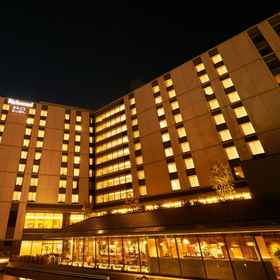

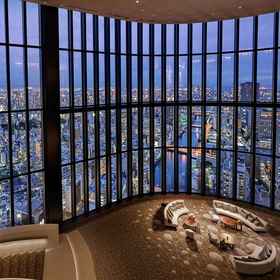



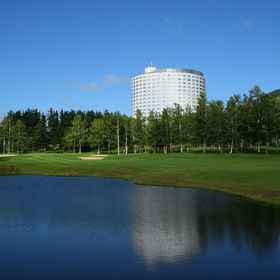
















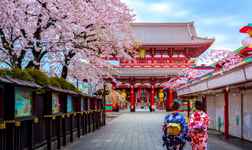


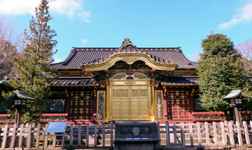













 Facebook
Facebook Instagram
Instagram TikTok
TikTok Youtube
Youtube Twitter
Twitter Telegram
Telegram